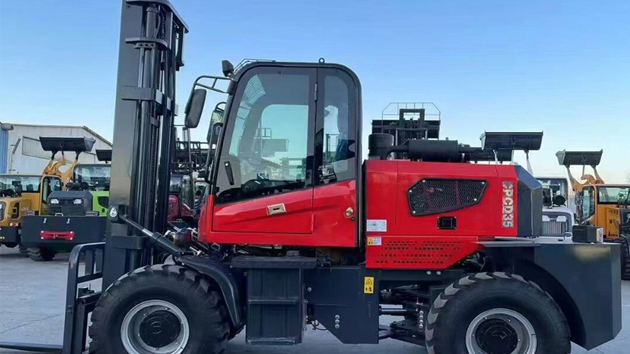The Critical Role of Water Wading Depth in Mining 4WD Forklifts
2025-07-05 03:55:29
The mining industry relies heavily on robust 4WD forklifts capable of navigating challenging terrains, including waterlogged areas. Water wading depth—the maximum depth a forklift can safely traverse—plays a pivotal role in operational efficiency. Industry standards suggest that most mining 4WD forklifts have a water wading depth ranging from 500mm to 800mm, depending on design and engineering. Exceeding these limits can lead to hydraulic system failures or electrical malfunctions, emphasizing the need for strict adherence to manufacturer specifications.
Advanced sealing technologies have significantly improved the water wading depth capabilities of modern mining 4WD forklifts. Critical components such as the engine, transmission, and electrical systems are now equipped with IP67 or higher-rated waterproofing. For instance, leading manufacturers like Caterpillar and Komatsu have introduced models with reinforced seals and elevated air intakes, allowing safe operation in depths up to 1 meter. These innovations ensure uninterrupted productivity even in flood-prone mining sites, reducing downtime and maintenance costs.
Field data from mining operations in Australia and Indonesia highlight the importance of water wading depth in real-world scenarios. Reports indicate that forklifts with inadequate depth ratings experienced a 23% higher failure rate during monsoon seasons. Conversely, models optimized for deeper wading demonstrated 15% longer service life in wet conditions. Such statistics underscore the need for mining companies to prioritize water wading depth when selecting equipment, especially in regions with frequent rainfall or swampy terrains.
Regulatory bodies, including ISO and OSHA, have begun incorporating water wading depth into safety guidelines for mining equipment. Compliance with these standards ensures not only operational reliability but also worker safety. For example, ISO 15817 mandates rigorous testing for water ingress resistance in mining 4WD forklifts, simulating prolonged exposure to high water levels. These measures help mitigate risks such as short circuits or engine stalling, which can be catastrophic in underground or open-pit mining environments.
Looking ahead, the mining 4WD forklift industry is expected to focus on enhancing water wading depth through AI-driven predictive maintenance and material science breakthroughs. Researchers are exploring hydrophobic coatings and self-draining chassis designs to push depth limits beyond 1.2 meters. As climate change increases the frequency of extreme weather events, these advancements will be crucial in maintaining operational continuity and safeguarding investments in mining infrastructure.












